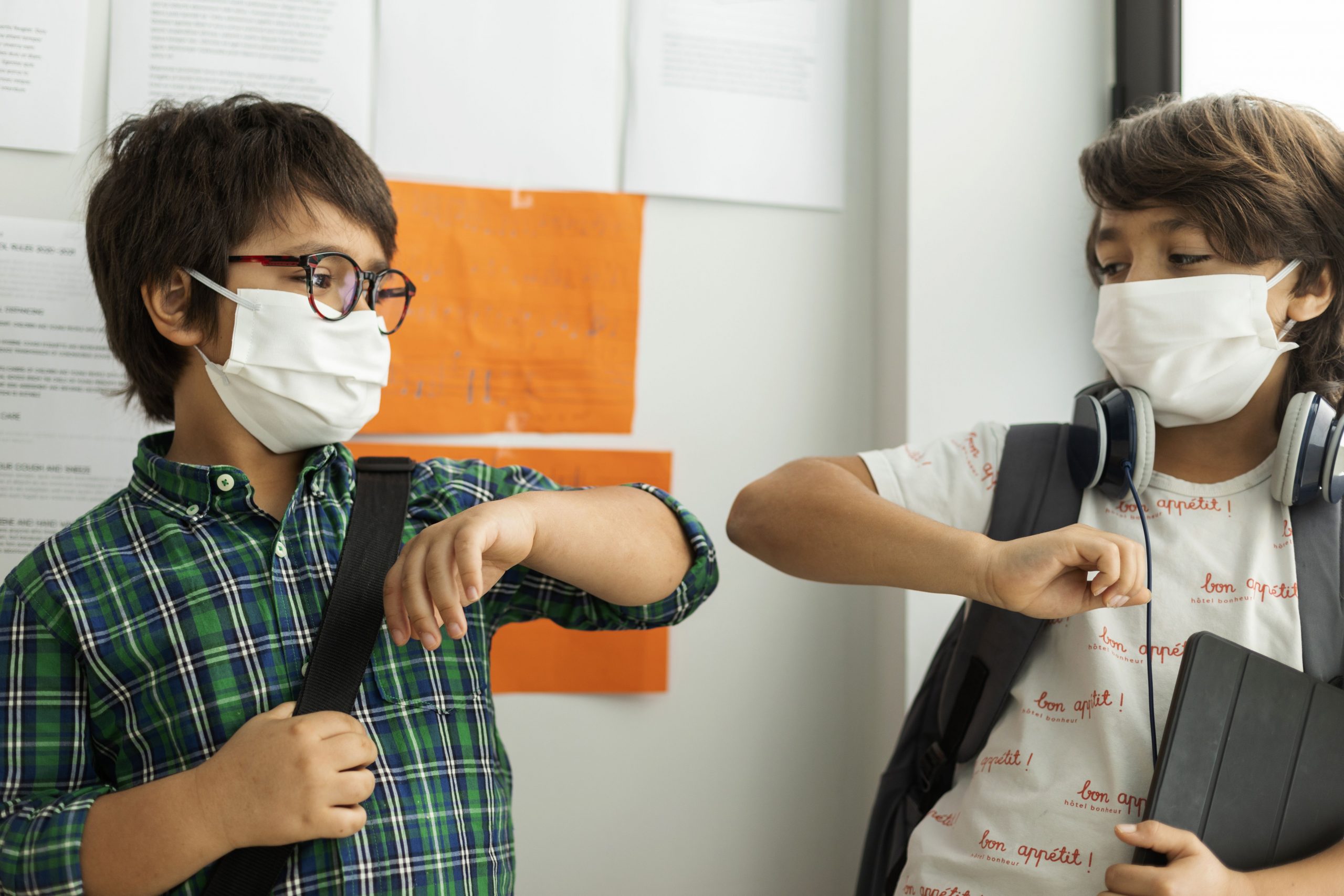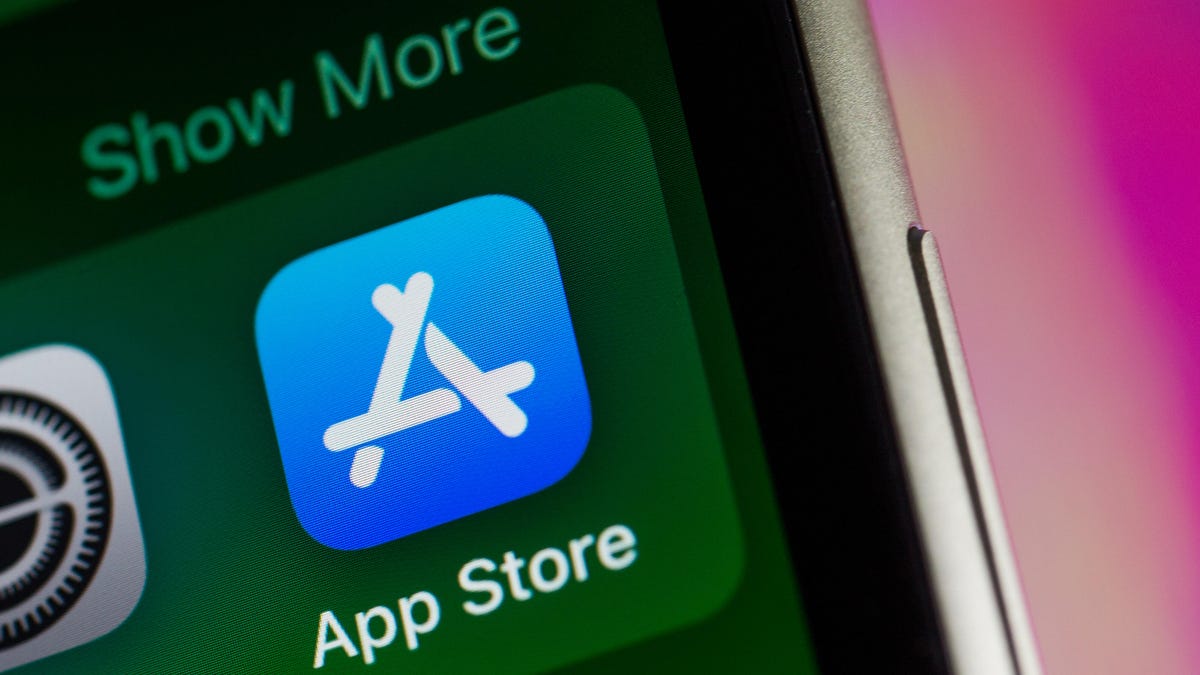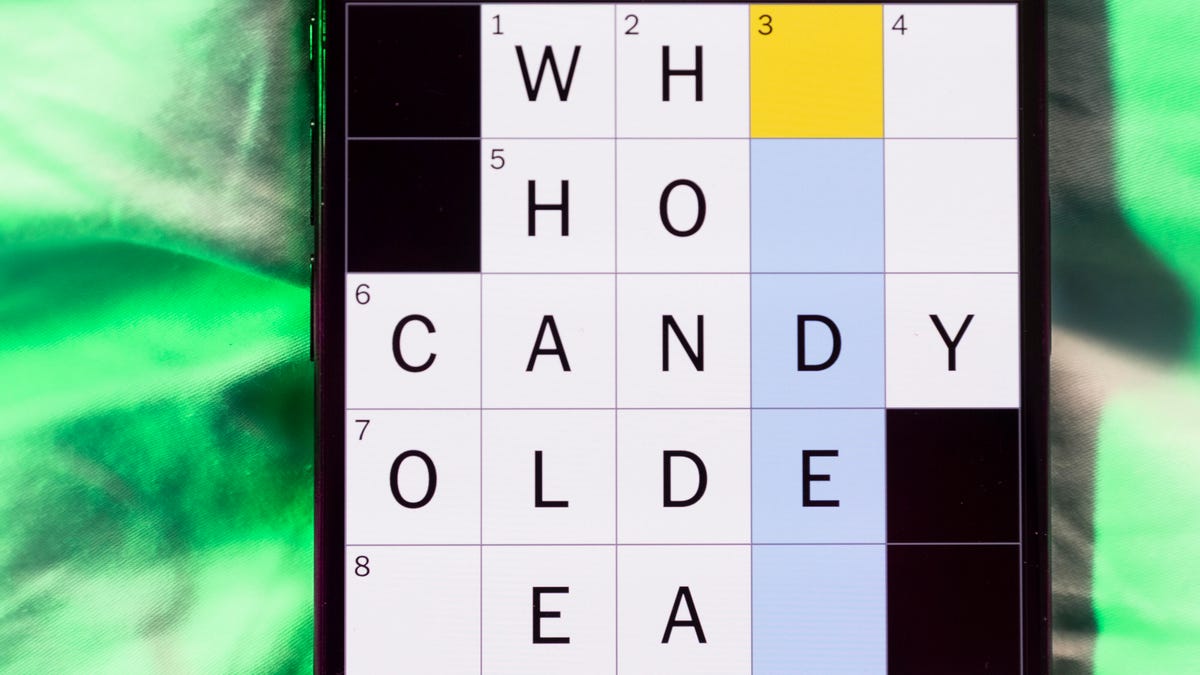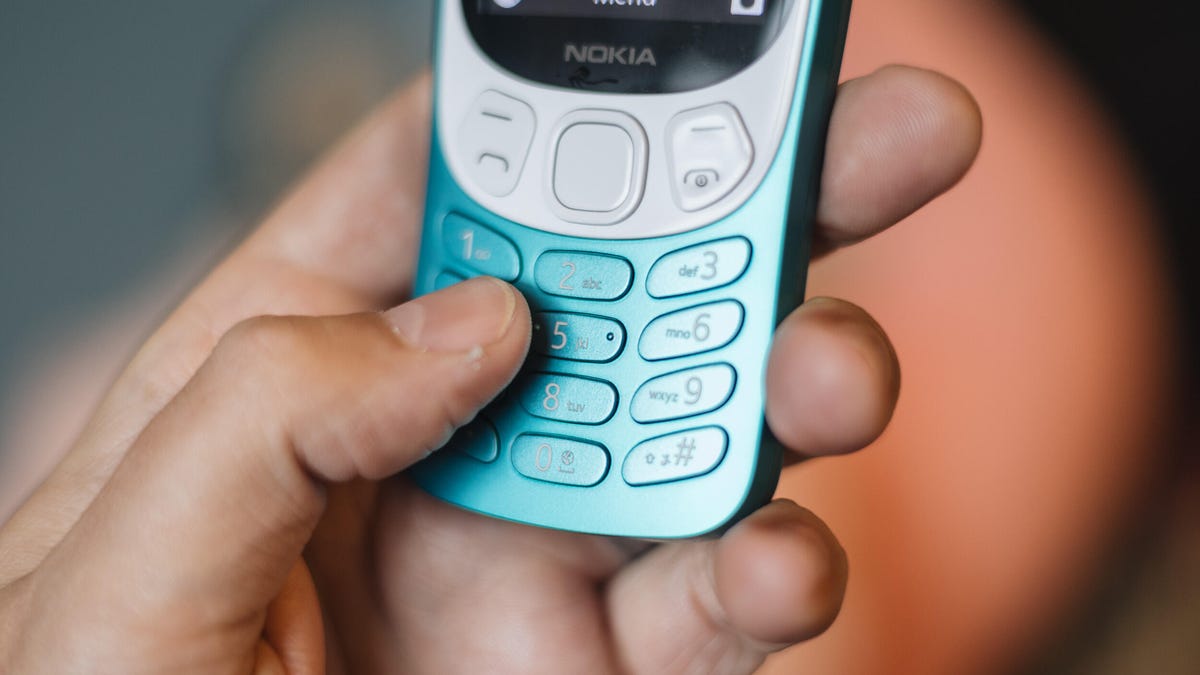Technologies
FDA committee endorses COVID vaccine for kids ages 5-11: Here’s the latest
If authorized and recommended, shots could be given out to young kids as early as next week. Here’s what to know before your child becomes eligible.

A panel of independent advisers to the US Food and Drug Administration voted Tuesday to recommended Pfizer’s COVID-19 vaccine to kids ages 5 to 11. The FDA still needs to give the vaccine official authorization, and another independent committee to the US Centers for Disease Control and Prevention will issue guidance next week on how shots roll out, but the vaccine could be available to younger kids soon after that.
Last week, the White House shared a plan to get kids under 12 vaccinated against the coronavirus, saying it «will be ready to begin getting shots in arms in the days following a final CDC recommendation.» In addition to Pfizer’s vaccine being a lower dose for kids ages 5 to 11 (one-third the dose given to everyone else), we may expect the COVID-19 campaign to look different for those in that age group.
Children remain at low risk of severe COVID-19 disease and death compared with the adult population (of states that reported data to the American Academy of Pediatrics, 0.1% to 2% of COVID-19 cases in children resulted in hospitalization). But children can experience complications from COVID-19, including long COVID. According to a poll by the Kaiser Family Foundation, about one-third of parents said they would vaccinate their child age 5 to 11 «right away» after they become eligible for a COVID-19 vaccine.
Although kids age 11 or younger can’t be vaccinated quite yet, teens ages 12 and up can be. While we wait for final recommendations for younger kids, here’s what we know about COVID-19 vaccines for kids.
When will kids be able to get a COVID-19 vaccine?
Kids ages 12 and up are able to get Pfizer’s COVID-19 vaccine. The other mRNA vaccine, Moderna, and the only single-dose vaccine on the US market, Johnson & Johnson, aren’t available for kids yet.
The FDA’s advisory committee met Tuesday and voted on recommending Pfizer’s COVID-19 vaccine for kids ages 5 to 11. Pfizer said in September that its vaccine is safe and effective for children in that age group, and members of the FDA’s committee ultimately voted that the benefits of vaccinating younger kids outweighed the risks. If an authorization is formally accepted by the FDA, an independent advisory committee to the US Centers for Disease Control and Prevention will meet Nov. 2-3 to decide how the shots will be administered to children, and the CDC will need to formally accept its recommendation. Both agencies typically follow the advice of their advisory committees, so we can expect a final decision for kids ages 5 to 11 next week.
Do I need to give consent in order for my young child to get vaccinated?
Yes, parents generally need to consent to their children receiving medical care, which will include Pfizer’s COVID-19 vaccine. This is especially true for younger children.
However, if you have a teenager or child old enough to express a desire to get a COVID-19 vaccine, but their desire is different than yours, they may have legal precedent to seek one out, depending on which state you live in.
In Tennessee, the rights of minors versus their parents when it comes to vaccine decisions came under the spotlight last summer when the state’s vaccine director, Michelle Fiscus, was allegedly fired, in part, for sending out a memo explaining Tennessee’s «mature minor doctrine,» which is the state’s writing on how minors may seek medical care without the consent of their parents in some cases.
If my child is immunocompromised or has a health condition, can they get a booster?
If your child is at least 12 years old, «moderately or severely» immunocompromised and vaccinated with Pfizer, according to the CDC, they should get a third dose of Pfizer. Moderna is only authorized for people aged 18 and older. Examples of people who are immunocompromised include people receiving treatment for cancers in the blood or tumors, organ transplant recipients, stem cell transplant recipients, people with untreated or advanced HIV infection and people taking drugs that could suppress the immune response, per the CDC.
The boosters currently available to some Americans who received Moderna, Pfizer or Johnson & Johnson only applies to adults age 18 or older. No minor is eligible for a booster.
Does Pfizer’s full FDA approval extend to kids?
The FDA’s approval of the vaccine by Pfizer and its partner, BioNTech, only applies to people as young as 16 years old. While Pfizer remains the only vaccine authorized for use in kids as young as 12 years old, vaccinating that age group is still under emergency use authorization rather than total approval. This is because, along with other factors, full FDA approval requires data on how the vaccine fares six months out, per NPR. Pfizer’s vaccine was only authorized for kids aged 12 to 15 in May.
This means that a vaccine mandate that hinges on full approval of a coronavirus vaccine, such as the one announced for schoolkids in California, won’t apply to kids younger than 16 for a while.
My child has allergies. Can they get the vaccine?
«If the child has a history of anaphylaxis or other severe allergies, then the observation time after the injection may be 30 minutes instead of 15,» Dr. Anne Liu, an infectious disease specialist with Stanford Hospital and Clinics and the Lucile Packard Children’s Hospital, said in August. So you might be asked to stick around the waiting room with your child for an extra 15 minutes so health care providers can monitor vaccine recipients for the (extremely rare) allergic reaction that can occur after any vaccination.
Additionally, Liu said, children who are prescribed an EpiPen for any reason should bring it to their vaccine appointment.
If your child has a severe allergy to any of the ingredients in the vaccine available to them, they shouldn’t take it, according to the World Health Organization. Adults allergic to any ingredient a COVID-19 also shouldn’t take that vaccine. Find the ingredients for Pfizer on the FDA fact sheet, as well as Moderna’s components.
Can my child get the COVID-19 shot at the same time as other vaccines?
Yes, according to the CDC, your child may get other vaccines when they go in for their coronavirus shot without waiting 14 days between appointments.
Should I worry about myocarditis?
Myocarditis and pericarditis, or inflammation in the heart, is a rare side effect linked to Moderna and Pfizer vaccines, mostly in adolescent males and young adults. After looking at data and weighing the risks and benefits, the CDC still recommends everyone, including children as young as 12, get vaccinated. According to a Washington Post report, the CDC and FDA are looking into Canadian data that suggests Moderna might carry a higher risk of myocarditis than Pfizer, mainly in young people.
When cases of myocarditis have occurred, Liu said, the cases have typically responded to treatment and resolved themselves, even when patients were hospitalized for a day or two.
«COVID-19 infection can have much more serious consequences for the heart than the vaccine,» Liu said.
The government in Singapore, where 82% of the population is fully vaccinated, recommends that people, especially adolescents and young men, refrain from strenuous exercise for a week after their second dose of a COVID-19 vaccine. The CDC recommends speaking to a doctor about when to return to sports or exercise following a diagnosis of myocarditis.
If I’m pregnant or breastfeeding, can I get vaccinated?
Yes, according to the CDC, because pregnant people are at much higher risk of severe COVID-19 and complications, including death, than people who aren’t pregnant.
Preliminary data shared by the CDC showed there was no increased risk of miscarriage among those who got an mRNA vaccine before the 20th week of pregnancy compared with those who didn’t.
My child can’t be vaccinated yet. What should we do?
When spending time with other families with children, it’s best if everyone continues to wear a mask, according to Harvard Health, and they should isolate themselves if there’s a COVID-19 exposure. Additionally, choosing more outdoor activities and avoiding crowds, even when outdoors, can help protect your kids. Parents and older siblings who are vaccinated should also mask up to prevent breakthrough infections that can spread to vulnerable people who aren’t as protected, including kids.
The CDC has prioritized in-person learning for students this fall, and it has guidance on prevention strategies schools should use to keep students and staff safe.
Correction, Oct. 25: A previous version of this story included a sentence implying incorrect information about available vaccines for children age 12 and older. Only Pfizer’s vaccine is currently available to kids ages 12 to 17.
The information contained in this article is for educational and informational purposes only and is not intended as health or medical advice. Always consult a physician or other qualified health provider regarding any questions you may have about a medical condition or health objectives.
Technologies
Judge Blocks Texas App Store Age-Check Law
A preliminary injunction found the Texas law, set to begin Jan. 1, is «more likely than not unconstitutional.»

A new Texas state law set to take effect on Jan. 1 would have required app stores to implement age verification processes. But the law has been put on hold, at least temporarily, by a federal court judge.
As reported by the Texas Tribune, Senate Bill 2420, also known as the Texas App Store Accountability Act, is the subject of a temporary injunction issued by US District Judge Robert Pitman.
Pitman said in his decision that the law as written is broad, vague and «more likely than not unconstitutional.» However, he also wrote the court «recognizes the importance of ongoing efforts to better safeguard children when they are on their devices.»
Don’t miss any of our unbiased tech content and lab-based reviews. Add CNET as a preferred Google source.
The Texas law, signed into law by Governor Greg Abbott in May, requires app store operators — including Apple, Google, Nintendo, Steam and more — to build age verification processes for the storefronts and to only allow downloads to minors who obtain parental consent. The injunction is a ruling in an October lawsuit filed by the Computer & Communication Industry Association.
CCIA senior vice president Stephanie Joyce said in a statement, «This Order stops the Texas App Store Accountability Act from taking effect in order to preserve the First Amendment rights of app stores, app developers, parents, and younger internet users. It also protects parents’ inviolate right to use their own judgment in safeguarding their children online using the myriad tools our members provide.»
Other individuals and the advocacy group Students Engaged in Advancing Texas also filed suits over the law, the Texas Tribune reported.
App Store Accountability Act
The bill author, State Senator Angela Paxton, said the bill was meant to give parents «common sense tools to protect their kids and to survive court challenges by those who may have lesser priorities.»
The language of Texas Senate Bill 2420 does not only include mobile app stores from Apple or Google, but any «website, software application, or other electronic service that distributes software applications from the owner or developer of a software application to the user of a mobile device.»
By that definition, websites with links to browser games or mobile game consoles with download options would fall under the Texas law as written. The law also defines mobile devices as including phones and tablets, as well as any other handheld device capable of transmitting or storing information wirelessly.
The parental consent aspect of the law requires those under 18 to have an app store account affiliated with a parent or guardian to purchase or download applications.
Age verification elsewhere
In an effort to keep adult materials out of reach of minors and to protect children from potentially harmful content and interactions, tech companies have been compelled by law or through legal action to verify the age of users.
Roblox, which has a huge audience of minors, began rolling out stricter age verification after investigations and lawsuits hurt its reputation as a safe gaming space. Australia is perhaps the most large-scale example of a government restricting access to online content. In December, Australia began restricting social media access to those 16 and older. Reddit recently challenged that law.
In the US, age verification laws have primarily targeted adult sites. Texas already has a law on the books that requires adult sites to age-block their content. The Supreme Court upheld that law in a June ruling. The UK has also enacted age restriction rules for adult sites as have other US states.
Technologies
Today’s NYT Mini Crossword Answers for Thursday, Dec. 25
Here are the answers for The New York Times Mini Crossword for Dec. 25.

Looking for the most recent Mini Crossword answer? Click here for today’s Mini Crossword hints, as well as our daily answers and hints for The New York Times Wordle, Strands, Connections and Connections: Sports Edition puzzles.
Need some help with today’s Mini Crossword? Of course, there’s a very Christmassy clue involved. And once you solve the entire puzzle, look at the letters used in all the answers and see what they have in common. (5-Across will tell you!) Read on for all the answers. And if you could use some hints and guidance for daily solving, check out our Mini Crossword tips.
If you’re looking for today’s Wordle, Connections, Connections: Sports Edition and Strands answers, you can visit CNET’s NYT puzzle hints page.
Read more: Tips and Tricks for Solving The New York Times Mini Crossword
Let’s get to those Mini Crossword clues and answers.
Mini across clues and answers
1A clue: ___ King Cole, singer with the album «The Magic of Christmas»
Answer: NAT
4A clue: Body drawings, informally
Answer: TATS
5A clue: Letters to ___ (what this Mini was made with)
Answer: SANTA
6A clue: Huge fan, in slang
Answer: STAN
7A clue: «Illmatic» rapper
Answer: NAS
Mini down clues and answers
1D clue: Grandmothers, by another name
Answer: NANAS
2D clue: Abbr. before a name on a memo
Answer: ATTN
3D clue: Org. with long lines around the holidays
Answer: TSA
4D clue: «See ya later!»
Answer: TATA
5D clue: Govt.-issued ID
Answer: SSN
Don’t miss any of our unbiased tech content and lab-based reviews. Add CNET as a preferred Google source.
Technologies
Don’t Let a Border Agent Ruin Your Holiday Trip. Travel With a Burner Phone
Yes, you should leave your main phone at home and take a cheap burner this winter.

Prepare for a whole new level of border-crossing anxiety this holiday season: the high-probability of a phone search. New figures from US Customs and Border Protection say agents aren’t just glancing at your lock screen anymore — they are aggressively ramping up device inspections, even for citizens coming home. We aren’t just talking about a quick scroll through your photos, either. Agents are increasingly using forensic tools to clone and analyze everything on your device.
The stats are genuinely alarming. In just a three-month window this year, nearly 15,000 devices were flagged for searches, with over a thousand subjected to deep-dive data copying. If you’re traveling with your primary phone, you are essentially carrying your entire digital existence into a legal gray zone where privacy is optional.
The smartest defensive play is remarkably low-tech: the burner phone. By traveling with a secondary, stripped-down device, you ensure your private data stays safe at home while you stay connected abroad. But privacy isn’t the only perk. Moving to a «dumb» phone is the ultimate digital detox, helping you escape the notification trap that usually ruins a vacation.
Even figures like Conan O’Brien have ditched the smartphone to cut through the noise. Whether you’re dodging invasive border searches or just trying to enjoy your trip without being glued to a screen, a burner might be the best travel investment you make this year.
Read more: Best Prepaid Phone of 2025
Although carriers have offered prepaid phones since the ’90s, «burner phones» or «burners» became popular in the 2000s following the celebrated HBO series The Wire, where they helped characters avoid getting caught by the police. Although often portrayed in that light, burners aren’t only used by criminals; they’re also used anyone concerned with surveillance or privacy infringement.
What is a burner phone, and how does it work? Here’s everything you need to know about burners and how to get one.
Don’t miss any of our unbiased tech content and lab-based reviews. Add CNET as a preferred Google source.
What is a burner phone?
A burner phone is a cheap prepaid phone with no commitments. It comes with a set number of prepaid call minutes, text messages or data, and it’s designed to be disposed of after use.
Burner phones are typically used when you need a phone quickly, without intentions of long-term use. They’re contract-free, and you can grab them off the counter. They’re called burner phones because you can «burn» them (trash them) after use, and the phone can’t be traced back to you, which makes them appealing to criminals. Of course, those committed to illicit activities often do more than just throw these phones in the trash, and often completely obliterate the SIM cards and other materials by smashing them with a hammer or melting them away.
Burners are different from getting a regular, contract-bound cellphone plan that requires your information to be on file.
Why should you use a burner phone?
Burner phones are an easy way to avoid cellphone contracts or spam that you get on your primary phone number. Burners aren’t linked to your identity, so you can avoid being tracked down or contacted.
You don’t have to dispose of a burner phone after use. You can add more minutes and continue using it. Burner phones can still function as regular phones, minus the hassle of a contract.
You can also get a burner phone as a secondary phone for a specific purpose, like having a spare phone number for two-factor authentication texts, for business or to avoid roaming charges while traveling. Burner phones are often used by anyone concerned with privacy.
Read more: The Data Privacy Tips Digital Security Experts Wish You Knew
Burner phones, prepaid phones, smartphones and burner SIMs: What’s the difference?
Burner phones are cheap phones with simple designs that lack the bells and whistles of a smartphone. Because they’re designed to be disposable, you only get the essentials, as seen by the most common version, the flip phone.
All burner phones are prepaid phones, but not all prepaid phones are burners. What sets a burner apart is that you won’t have to give away any personal information to get one, and it won’t be traceable back to you. Again, a burner phone is cheap enough to be destroyed after use.
Prepaid smartphones are generally low-end models. You can use any unlocked smartphone with prepaid SIM cards, essentially making it a prepaid phone.
If you want a burner, you don’t necessarily have to buy a new phone. You can get a burner SIM and use it with an existing phone. Burner SIMs are prepaid SIMs you can get without a contract or giving away personal information.
Where can you buy a burner phone?
Burner phones are available at all major retail outlets, including Best Buy, Target and Walmart. They’re also often available at convenience stores like 7-Eleven, local supermarkets, gas stations and retail phone outlets like Cricket and Metro.
You can get a burner phone with cash, and it should cost between $10 and $50, although it may cost more if you get more minutes and data. If you’re getting a burner phone specifically to avoid having the phone traced back to you, it makes sense to pay with cash instead of a credit card.
If you just want a prepaid secondary phone, you can use a credit card. Just keep in mind that credit cards leave a trail that leads back to you.
There are also many apps that let you get secondary phone numbers, including Google Fi and the Burner app. However, these aren’t burners necessarily because the providers typically have at least some of your personal information. Additionally, apps like Google Talk require a phone number that’s already in use for you to choose a number with the service.
If you’re just looking to get a solid prepaid phone without anonymity, check out our full guide for the best prepaid phone plans available. We also have a guide for the best cheap phone plans.
-

 Technologies3 года ago
Technologies3 года agoTech Companies Need to Be Held Accountable for Security, Experts Say
-

 Technologies3 года ago
Technologies3 года agoBest Handheld Game Console in 2023
-

 Technologies3 года ago
Technologies3 года agoTighten Up Your VR Game With the Best Head Straps for Quest 2
-

 Technologies4 года ago
Technologies4 года agoBlack Friday 2021: The best deals on TVs, headphones, kitchenware, and more
-

 Technologies4 года ago
Technologies4 года agoVerum, Wickr and Threema: next generation secured messengers
-

 Technologies4 года ago
Technologies4 года agoGoogle to require vaccinations as Silicon Valley rethinks return-to-office policies
-

 Technologies4 года ago
Technologies4 года agoOlivia Harlan Dekker for Verum Messenger
-

 Technologies4 года ago
Technologies4 года agoiPhone 13 event: How to watch Apple’s big announcement tomorrow
